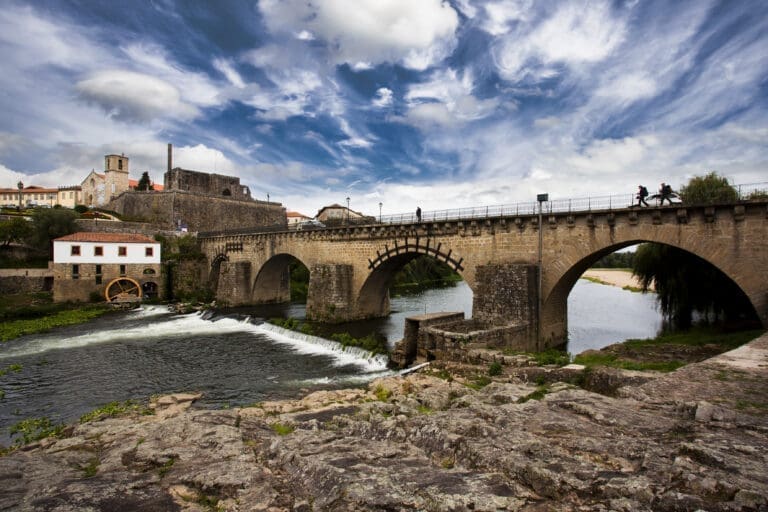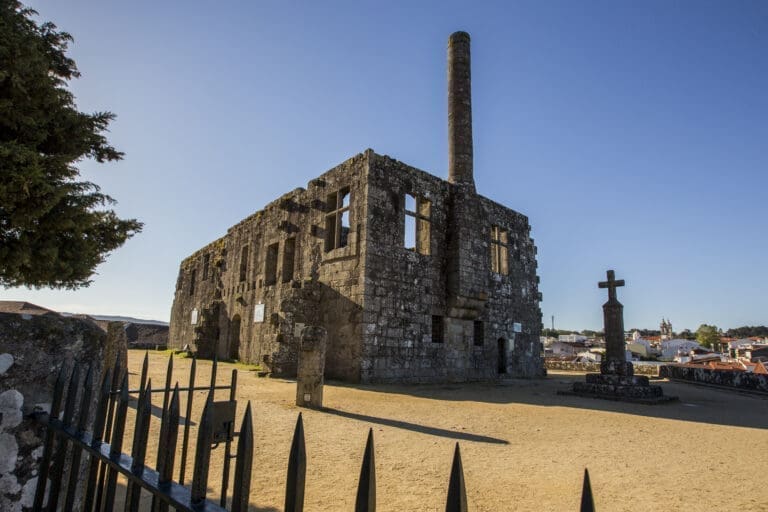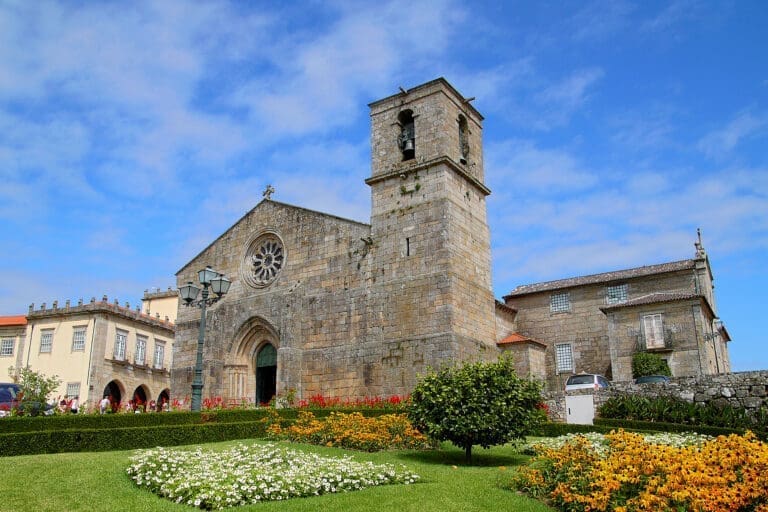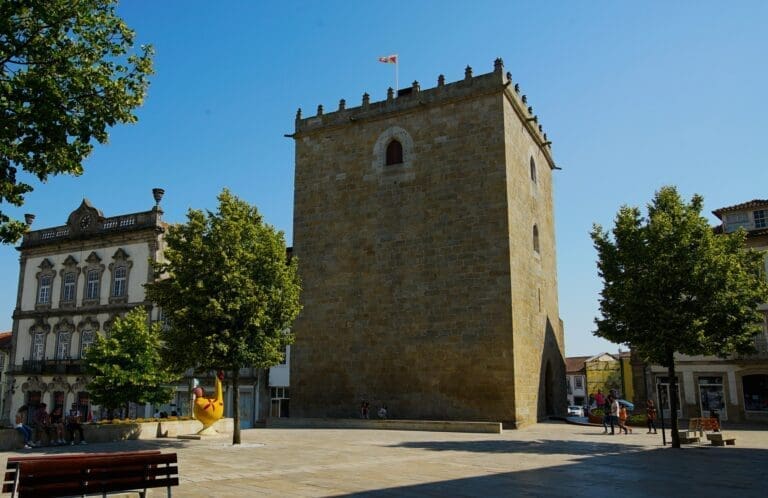In 1707, the Bishop of Braga D. Rodrigo de Moura Teles gave the order for the laying of the first stone of a convent of Benedictine nuns, thus obeying the request of King D. João V to fulfill the wish of his father D. Pedro II. An inscription on the wall next to the portal says so.
The exterior of the Church of Nossa Senhora do Terço is very sober and simple, but the interior reveals one of the best examples of Portuguese Baroque, with the harmonious combination of painting, tiles and carvings.
The wooden coffered ceiling and the tile panels that completely cover the body of the church, painted in 1713 by the master António de Oliveira Bernardes, show a rich iconography about the life of São Bento. In the main chapel, another baroque tile master named P.M.P., signs two panels recounting the foundation of the monument and the entry of the first nun into the convent.
Also worth noting is the work on the canopy pulpit attributed to Gabriel Rodrigues Álvares and the gilded altars attributed to Ambrósio Coelho, which complete the church’s decorative program, of recognized quality.

 Barcelos, Northern Portugal
Barcelos, Northern Portugal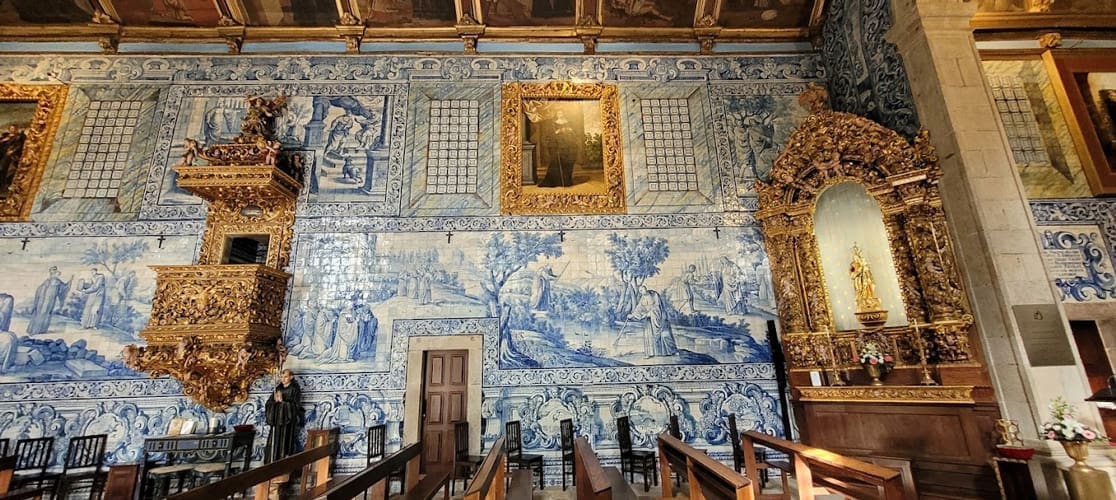
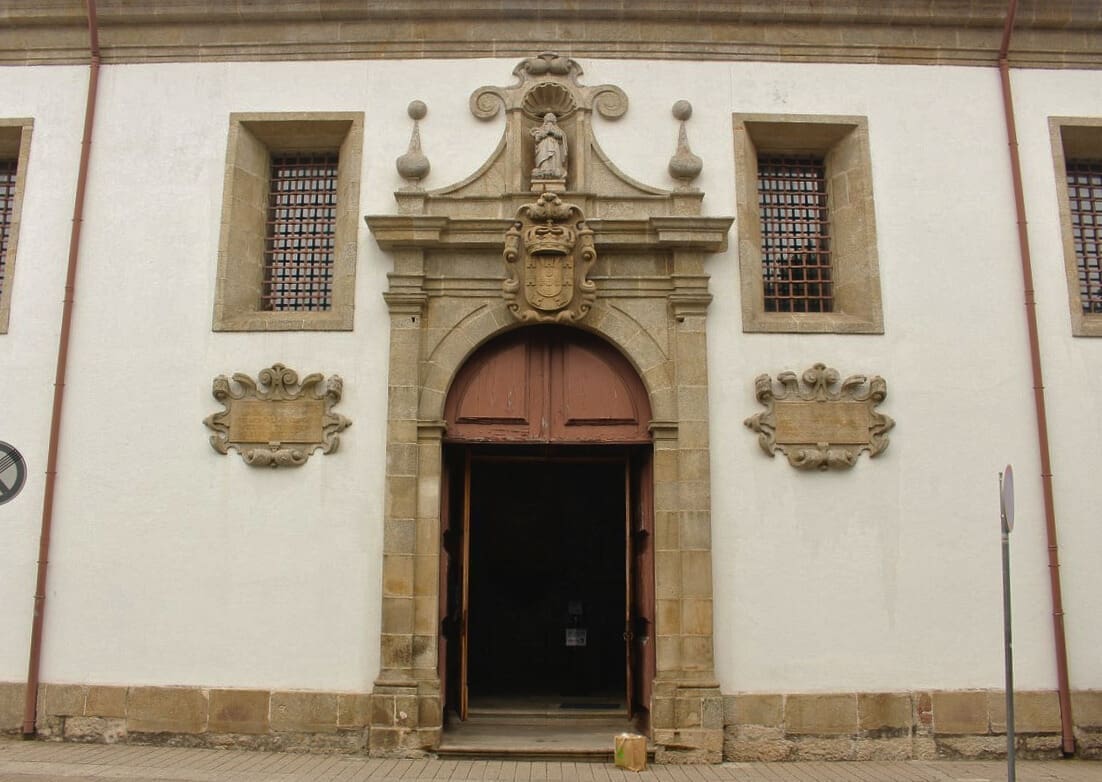





 Church of Nossa Senhora do Terço
Church of Nossa Senhora do Terço 